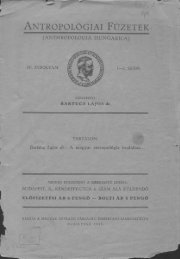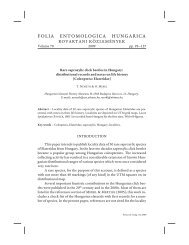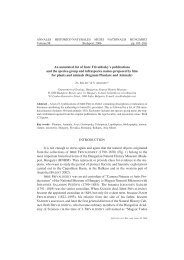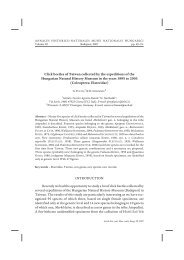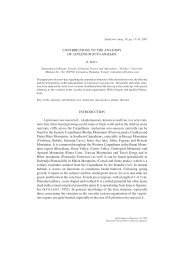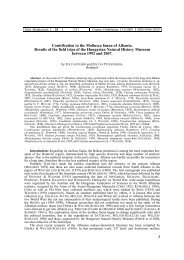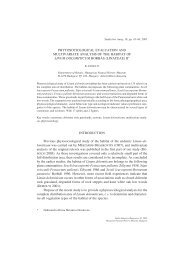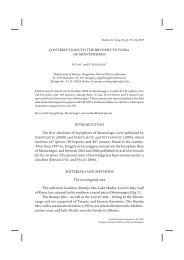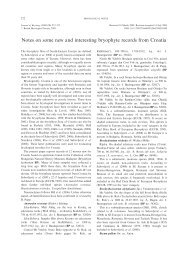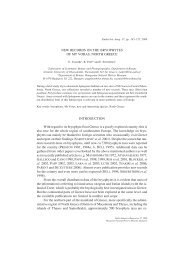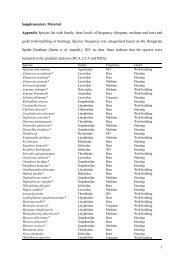THE GENUS SCHISTIDIUM (GRIMMIACEAE, MUSCI) IN HUNGARY ...
THE GENUS SCHISTIDIUM (GRIMMIACEAE, MUSCI) IN HUNGARY ...
THE GENUS SCHISTIDIUM (GRIMMIACEAE, MUSCI) IN HUNGARY ...
You also want an ePaper? Increase the reach of your titles
YUMPU automatically turns print PDFs into web optimized ePapers that Google loves.
<strong>THE</strong> <strong>GENUS</strong> <strong>SCHISTIDIUM</strong> <strong>IN</strong> <strong>HUNGARY</strong> 85<br />
fact that it becomes rarer towards continental parts of Europe like Hungary.<br />
It may be significant that most of its Hungarian records are in the<br />
Bükk Mts, the highest among the calcareous mountains, and receiving<br />
most precipitation (RADÓ 1979). On the other hand, S. brunnescens subsp.<br />
brunnescens, one of the most frequent taxa in Hungary, may appear to be<br />
more continental, since records are fewer in Germany and Austria. S.<br />
lancifolium, which in Hungary is among the five most frequent species, is<br />
definitely even more continental; it is not known from Baden-Württemberg<br />
and rare in Germany and Austria. The characterization of its German<br />
and Austrian habitats corresponds well to our observations in Hungary,<br />
and where elevation is given in the Austrian records, it ranges from 800 to<br />
1,700 m a.s.l. S. helveticum, which is not rare in the south-western and central<br />
parts of Germany and in Hungary, appears to be very rare in Austria,<br />
maybe due to scarcity of xerothermic habitats.<br />
For the remaining taxa, Hungarian records are few, but in the light of<br />
data from Germany and Austria, this may in some cases not reflect their<br />
true frequency. S. papillosum, S. robustum and S. dupretii are frequent in<br />
both countries, and we have at present no idea why they appear to be much<br />
rarer in Hungary. S. pruinosum is not infrequent in Baden-Württemberg<br />
and a few other, mainly western parts of Germany, but rare in Austria and<br />
perhaps also in Hungary. The taxa of the Confertum group, S. confertum<br />
and S. flaccidum, which are thought to be truly rare in Hungary, are rare and<br />
red-listed in Baden-Württemberg and Germany (in the highest threat categories,<br />
2 and 1, respectively, of all extant Schistidium taxa in ME<strong>IN</strong>UNGER<br />
and SCHRÖDER 2007); in Austria, however, S. confertum is moderately frequent<br />
in the siliceous parts of the Alps, whereas S. flaccidum is rare to occasional<br />
(H. Köckinger, pers. com.). S. confusum is rare in Germany as well as<br />
in Austria.<br />
CONSERVATION<br />
It seems premature to draw conclusions with respect to threat status<br />
according to the IUCN criteria (IUCN 2001), since much of the data is still<br />
insufficient for this purpose. To improve the state of knowledge, a more<br />
comprehensive field survey of Hungary with special focus on Schistidium<br />
would be desirable. This would probably lead to the discovery of several<br />
Studia bot. hung. 39, 2008



